Yearning to unravel the enigma of rabies in bees? Dive in to explore this intriguing intersection of entomology and virology.

Can Bees Get Rabies?
Like a detective piecing together a complex puzzle, you're probing the world of infectious diseases and their potential hosts. The question of whether bees can get rabies might have crossed your mind.
It's a fascinating query that straddles the line between entomology and virology, and the answer isn't as straightforward as you might think. While it's easy to dismiss the possibility based on size and species differences alone, there's more to this story than meets the eye.
So, should you worry about a rabid bee sting? Let's explore this intriguing subject further.
Key Takeaways
- Rabies is primarily spread through the bite of infected mammals, such as bats, raccoons, skunks, and foxes.
- Bees have a unique biology that makes them unable to contract rabies, including their ectothermic regulation of body temperature and lack of a traditional bloodstream for the virus to travel through.
- Bees have complex immune systems that present hurdles to the rabies virus, relying on innate immune responses, physical barriers like the cuticle and wax, and social immunity measures.
- Bees and mammals have fundamental physiological and biological differences that prevent bees from contracting rabies, including the absence of a central nervous system and unsuitable body temperature for the virus to thrive.
Understanding Rabies and Its Transmission
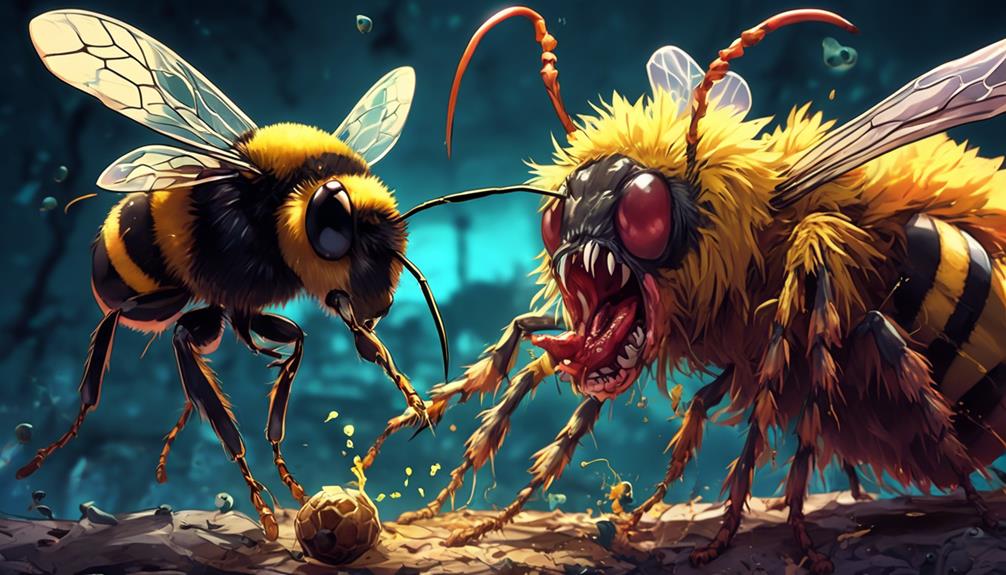
To truly grasp the concept of rabies and how it's transmitted, you need to delve into the scientific nature of the disease, a viral infection that primarily spreads through the bite of an infected animal. It's not just any virus, but a specific kind known as Lyssavirus. This virus replicates in the muscle tissue near the area of the bite, then gradually spreads to the central nervous system where it causes severe neurological symptoms.
You must understand that not just any bite transmits rabies. It's the saliva of the infected animal that harbors the virus. When this animal bites another, it introduces the virus into the victim's body. Consequently, transmission is more likely when the bite is deep or when it occurs on the face or hands, where there are plenty of nerve endings.
While rabies has been found in many species, it's primarily associated with mammals. In North America, for example, bats, raccoons, skunks, and foxes are common carriers. You'd be hard-pressed to find a case of an insect, like a bee, contracting or transmitting rabies. It's crucial to know these facts to better understand rabies and its transmission patterns.
The Unique Biology of Bees
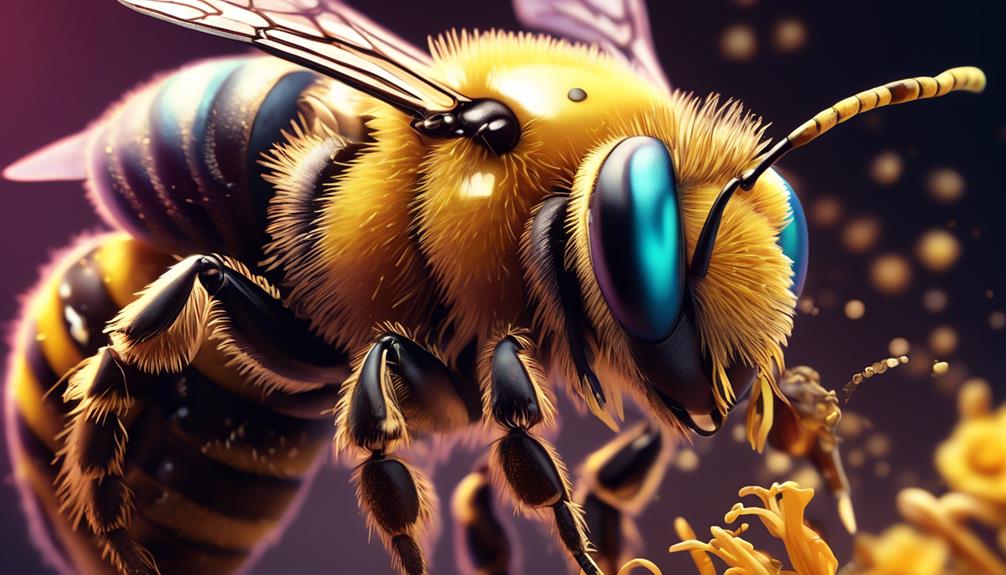
Delving deeper into the unique biology of bees, you'll find that these insects possess characteristics that make them an unlikely host for the rabies virus. Bees, as ectotherms, regulate their body temperature externally, contrasting the homeothermic nature of mammals, which rabies typically infects. The virus requires a host maintaining a constant, high body temperature to survive and replicate.
Bees also lack the traditional bloodstream that rabies uses to travel throughout a mammalian host. Instead, they've an open circulatory system where haemolymph, a fluid equivalent to our blood, freely bathes internal organs. This setup doesn't offer the virus an easy path to the bee's nervous system, its target in mammals.
Lastly, consider the bee's lifespan. Worker bees live a mere five to six weeks during the summer, a stark contrast to the months or even years that rabies takes to manifest symptoms in mammals. The virus simply wouldn't have the necessary time to complete its lifecycle within a bee.
Exploring Bee Immune Systems
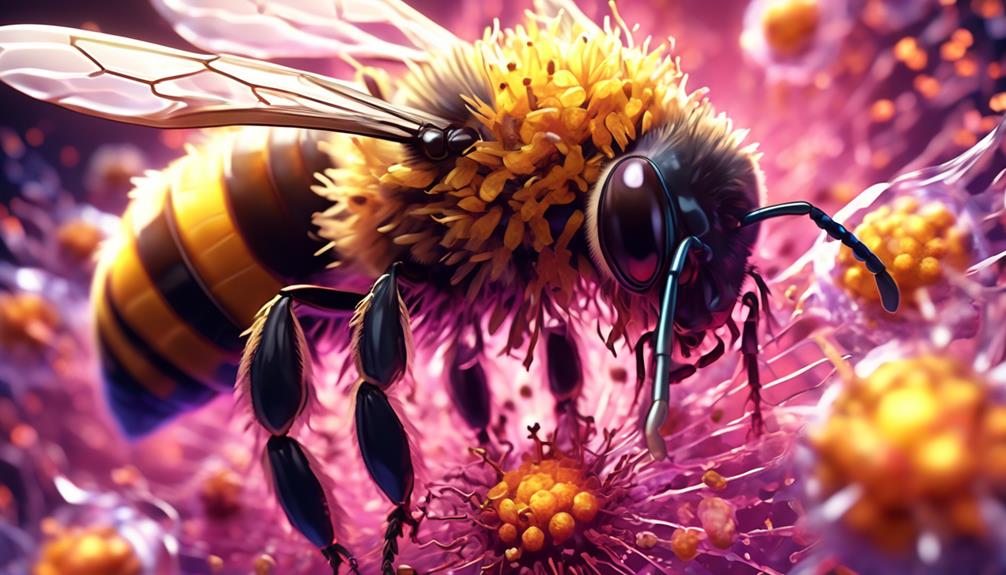
Building on the unique biology of bees, let's now examine their immune systems, which present further hurdles to the rabies virus. Unlike mammals, bees don't have adaptive immunity, meaning they can't produce antibodies to fight off specific invaders. Instead, their innate immune system relies on a set of generic responses to any foreign organism.
The key players in this system are hemocytes, blood cells that perform a variety of tasks such as phagocytosis, encapsulation, and the release of antimicrobial peptides. These peptides are small proteins that can kill a broad range of pathogens by disrupting their cell membranes.
Furthermore, bees have an external layer called the cuticle, which acts as a physical barrier against invaders. The cuticle is covered in a layer of wax and antimicrobial compounds, adding an additional layer of defense.
Lastly, bees use social immunity, where the colony works together to prevent disease. For instance, they'll remove diseased larvae and use propolis, a plant resin with antimicrobial properties, to sterilize the hive.
Reasons Bees Can't Contract Rabies
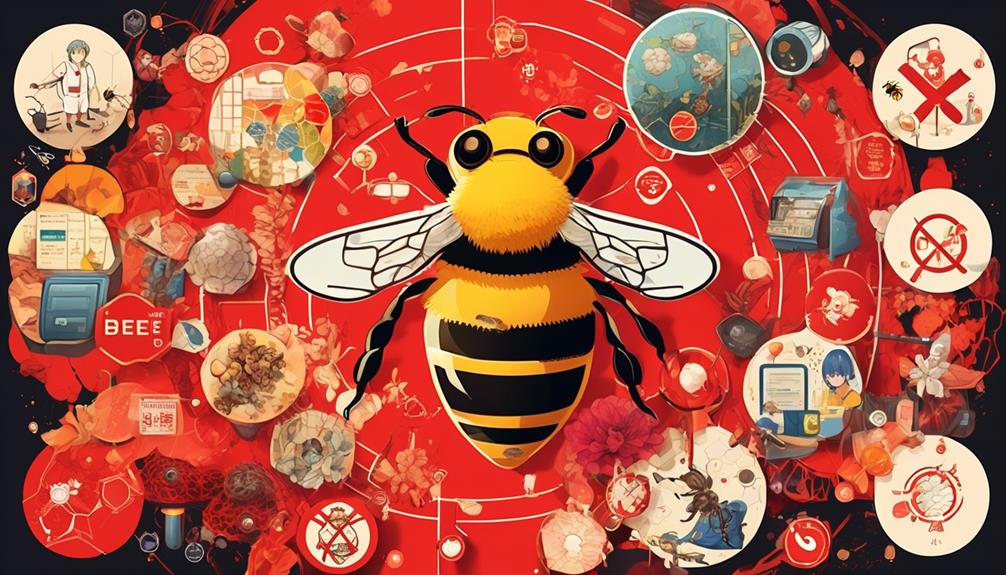
Despite their complex immune systems, bees aren't capable of contracting rabies, primarily due to several key physiological and biological differences between them and mammals. Firstly, bees are invertebrates, lacking the warm-blooded nature and certain bodily systems like the central nervous system, which the rabies virus primarily targets in mammals.
Secondly, the temperature within a bee's body doesn't provide a suitable environment for the rabies virus to thrive. The virus needs a constant, relatively high temperature to survive, something that bees' bodies can't provide.
To understand these differences better, let's take a look at the table below:
Trait | Bees | Mammals |
|---|---|---|
Warm-blooded | No | Yes |
Central Nervous System | No | Yes |
Suitable Temperature for Rabies | No | Yes |
Can Contract Rabies | No | Yes |
Understanding these fundamental differences, it becomes clear why bees can't contract rabies. This fact provides a broader understanding of how diseases are spread and the specificity of their hosts. So next time someone asks if bees can get rabies, you'll know the answer and the reasons why.
Debunking Common Bee Misconceptions
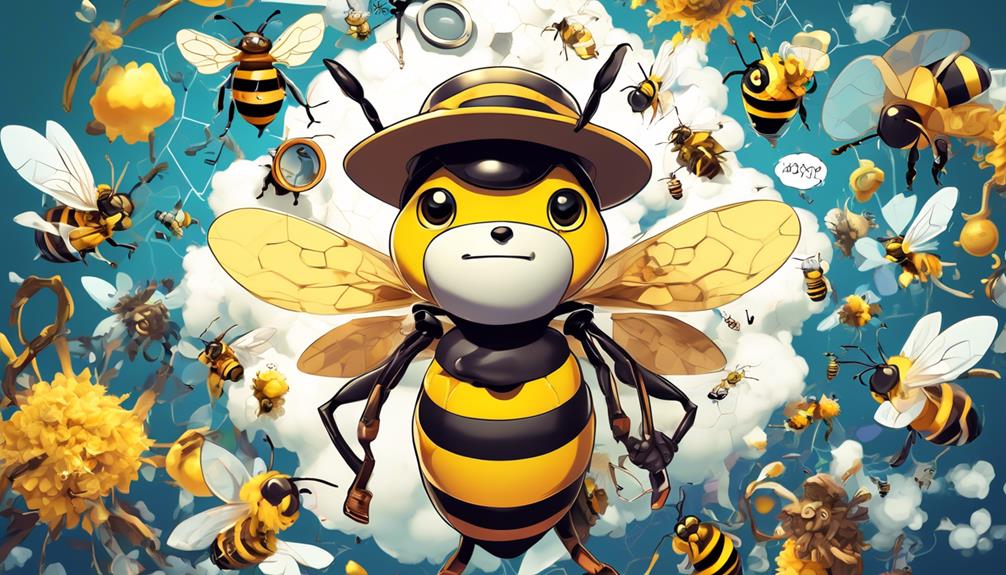
Having established why bees can't contract rabies, let's now address various other misconceptions about these fascinating insects that often lead to unnecessary panic and confusion.
Firstly, you might've heard that bees die after stinging. This is only true for honeybees which possess barbed stingers. When they sting, the stinger gets lodged into the skin, which ultimately kills them. However, other bee species, such as carpenter and bumblebees, can sting multiple times without dying.
Secondly, not all bees produce honey. Only honeybees and a few other species do. Most of the 20,000 recognized bee species are solitary insects and don't produce honey or beeswax.
Another common misconception is that all bees live in hives. In reality, the majority of bee species are solitary and nest in the ground or in wood.
Lastly, many people believe all bees are aggressive. While Africanized honeybees, also known as 'killer bees,' are aggressive, most bees are quite docile unless provoked. They're more interested in finding nectar than in stinging you.
Understanding these facts will help you better appreciate bees and their vital role in our ecosystem.
Frequently Asked Questions
What Other Diseases or Viruses Can Bees Transmit to Humans?"
You're probably wondering if bees can transmit diseases or viruses to humans.
While bees aren't known to transmit rabies, they can carry and spread bacterial and fungal infections.
If you're stung, bacteria from the bee's body can enter your skin and cause an infection.
Additionally, certain types of mold spores on a bee's body can cause allergic reactions.
How Does a Bee's Diet Affect Its Overall Health?"
Your bee's diet greatly influences its health. A balanced intake of pollen and nectar ensures they get essential proteins, sugars, vitamins, and minerals. If they're not getting these, they're more susceptible to diseases.
For instance, malnutrition can weaken their immune system, making them more vulnerable to parasites and bacteria.
Do Bees Have Any Natural Predators That Can Spread Diseases?"
Yes, bees do have natural predators that can spread diseases. Mites, wasps, and certain types of birds can carry pathogens harmful to bees.
You've got to remember, it's a tough world out there for bees. Not only do they have to deal with natural predators, but they also face threats from pesticides and habitat loss.
It's important to consider these factors when trying to understand the challenges bees face.
What Measures Can Beekeepers Take to Ensure Their Hives Remain Disease-Free?"
You, as a beekeeper, can take several measures to keep your hives disease-free.
Regularly inspect hives for signs of disease or parasites.
Maintain clean equipment and avoid sharing between hives.
Provide bees with a balanced diet to boost their immune system.
Lastly, consider treatments or medications if necessary.
It's crucial you're proactive in preventing disease, it's not just about your bees' health, but the health of the whole ecosystem.
How Does the Environment or Climate Affect the Health of Bees?"
Your local environment or climate can greatly impact bee health. Cold, harsh winters can kill bees, while hot, dry summers can lead to a lack of flowers and, therefore, less food.
Additionally, changes in temperature or weather conditions can stress bees, making them more susceptible to disease. Pesticides used in your area can also harm bees.
Conclusion
So, can bees get rabies? No, they can't. Their unique biology, coupled with their robust immune system, protects them from contracting the disease.
It's essential to debunk misconceptions about bees and understand the nature of diseases like rabies. So next time you're buzzing about bees, remember, while they may sting, they won't give you rabies.
Dive deeper into the world of bees and their immunity, and you'll uncover fascinating facts about these hardworking pollinators.


